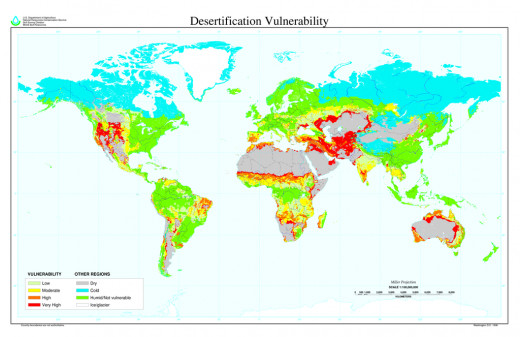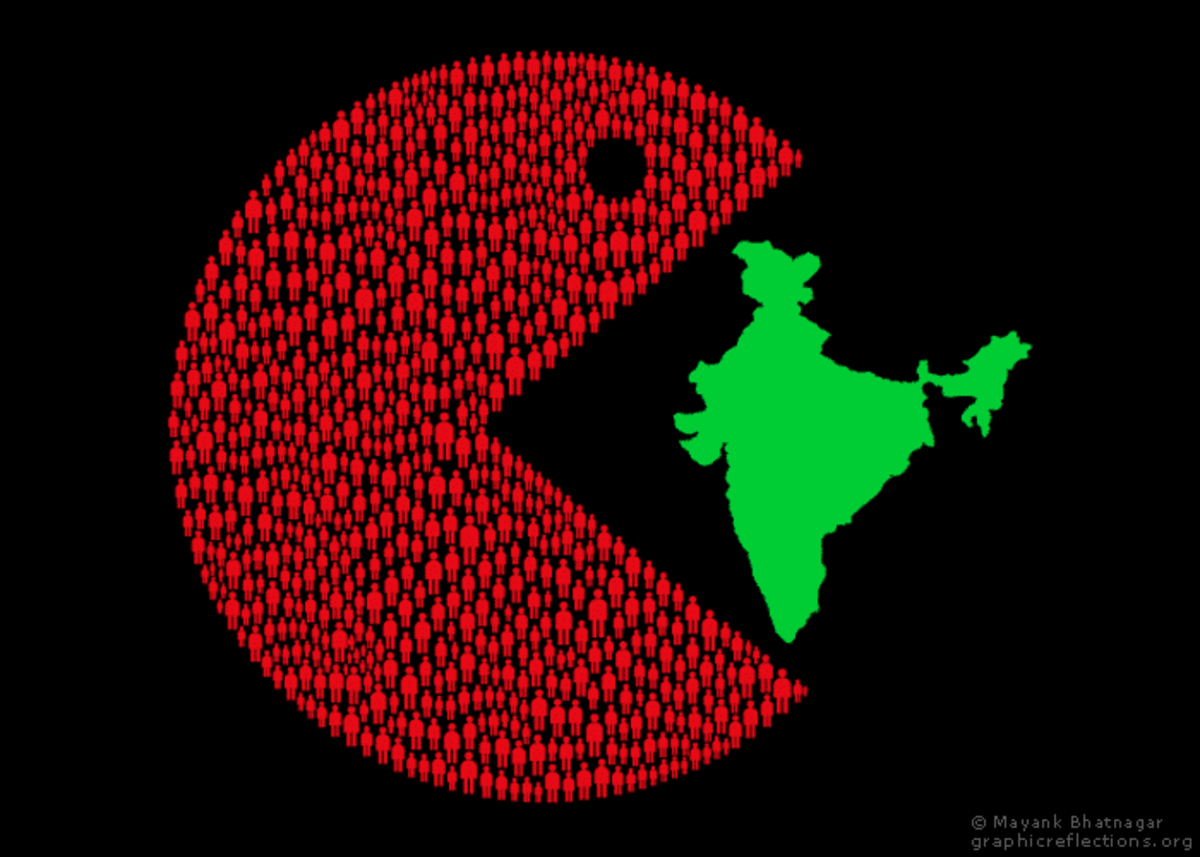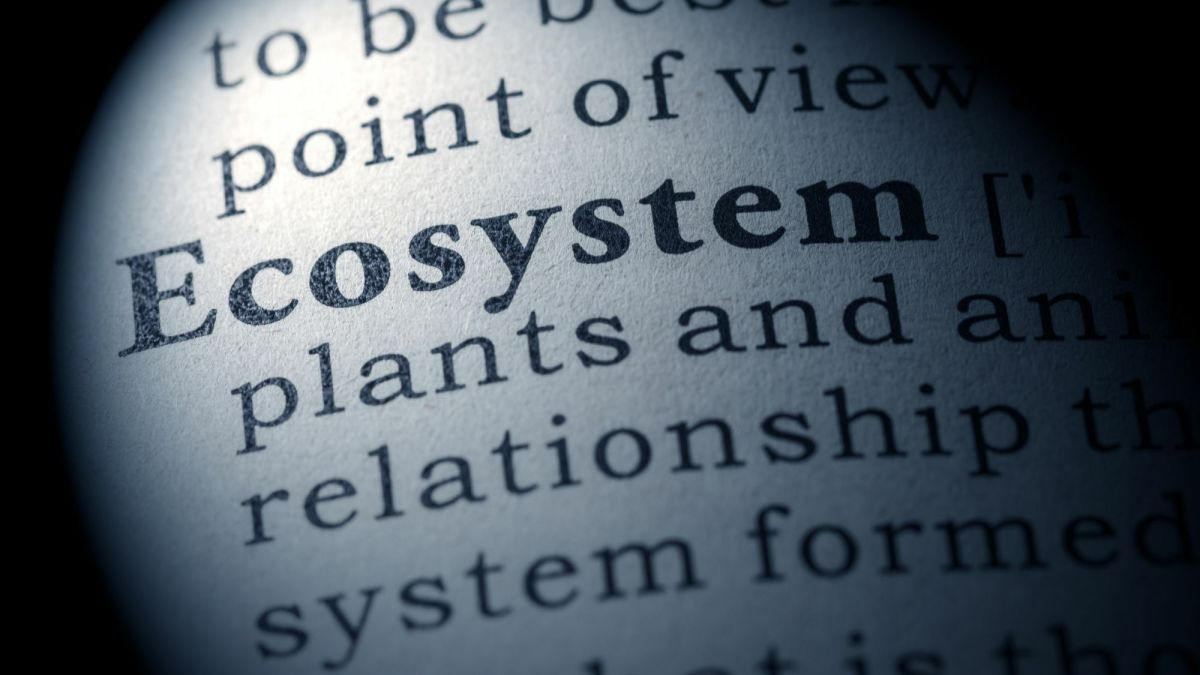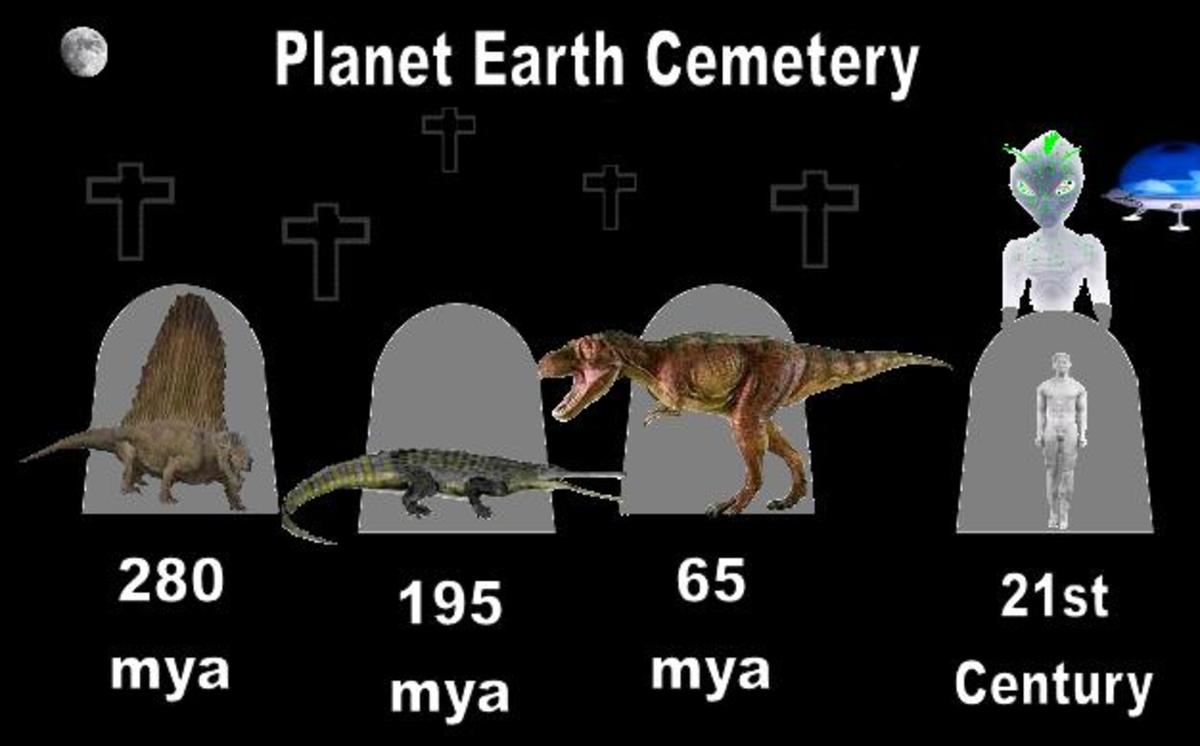The Human Population Problem
Birth and Death Rates
Country
| Birth Rate
| Death Rate
| Rate of Natural Increase
|
|---|---|---|---|
United States
| 14
| 8
| 6
|
China
| 12
| 7
| 5
|
United Kingdom
| 12
| 9
| 3
|
Uganda
| 47
| 12
| 35
|
Figures rounded to nearest whole
Data from People Facts
Basic Terms
Two of the most basic terms to understand when dealing with population are birth rates and death rates. Each term refers to the number of births or deaths per 1,000 people, per year. For example, the birth rate in the United States is currently 14, so per 1,000 Americans, 14 are born annually.
The difference between the birth and death rates is known as the rate of natural increase. For example, if the birth rate in the U.S. is 14, and the death rate is 8, then the rate of natural increase is 6 per 1,000.
Another measurement used in terms of population growth is the Total Fertility Rate (TFR). This number represents the number of children that a woman is expected to produce in her lifetime. The current TFR in the United States is 1.89. Replacement-Level Fertility refers to the number of children required to replace their mother and father, accounting for deaths that occur prior to reaching reproductive age. The number of children required to replace a mother and father in the United States is currently 2.1.
The Carrying Capacity of a given area refers to the maximum population that the environment can sustain in terms of providing resources and assimilating waste.
Overpopulation
According to Scientific American, population growth is “the most overlooked and essential strategy for achieving long-term balance with the environment."
Overpopulation is often cited as one of the biggest problems facing the environment today. In terms of environmental conservation, overpopulation refers to the condition in which the population exceeds the carrying capacity of the environment. This can manifest itself in both less developed (LDCs) and more developed countries (MDCs), though in different forms. In LDCs, overpopulation tends to be simply a matter of having more mouths to feed than available food (referred to as Malthusian Overpopulation.) In this situation, starvation and malnutrition are the most obvious symptoms, but additional problems include deforestation and erosion, extinction of plants and wildlife in attempts to meet rising food demand, and contamination of streams with human waste. This is also known as Population-based resource degradation.
In MDCs it is called Consumption-based resource degradation or Technological Overpopulation. This refers to the impact of technologies like automobiles on the environment as well as the increased rate of consumption. In MDCs, people can have as much as 20 to 40 times the environmental impact as individuals in LDCs. Therefore, a much smaller population can have a significantly greater environmental impact.

Controlling Population Growth
There are two major schools of thought pertaining to methods of population control. The first is family planning, and the second is sustainable development.
Family Planning refers to controlling population growth by way of contraception and abortion. While birth control (including the pill, intrauterine devices, sterilization, abstinence, etc.) is a popular method dating back as far as 5,000 B.C. and practiced by 61% of married women in the United States, controlling birth rates simply is not enough to mitigate the problem as evidenced by the continued population growth rates.
Sustainable development, on the other hand, serves the purpose of creating better quality of life without undermining ecological functions. This can include economic development, improvements in health care, cultural shifts, and educational development. Since increased per capita income results in reduced birth rates, education and economic development can have a great impact on population growth especially in LDCs. Improving health care reduces the infant death rate, therefore also reducing the replacement-level fertility rate required in a given country.
Desertification Map

Results of Overpopulation
Degradation of the environment is one of the major impacts related to overpopulation. Increasing populations and development throughout the world results in greatly increased CO2 emissions, urbanization and the resultant damage to natural resources, pollution, and usage of non-renewable resources like fossil fuels.
Unemployment rates also increase as the population exceeds the number of available jobs. This, as is commonly known, results in problems ranging from poverty to increased crime rates. Additionally, as the disparity between supply and demand increases, costs of basic amenities like food and shelter increase, making it effectively more expensive to survive.
Many wars and conflicts also relate directly to increasing demands on natural resources. Conflict over water and food take place all over the globe in LDCs, further aggravated by high rates of unemployment that sow discontent among the populations.
Desertification occurs as a result of over-farming and excessive timber cutting in many regions, turning a relatively dry area into an increasingly arid one that produces minimal, if any, useful resources.

In Conclusion
Assuming that human birth rates are fast approaching the estimated carrying capacity of Earth or have already exceeded it, it is important to consider the potential repercussions of outgrowing the planet. Essentially, if the human population continues to grow and exceeds the carrying capacity of the planet, the result will eventually be a massive die-off resulting from starvation, malnutrition, and resource depletion. Though this will potentially reduce the population to a sustainable level, irreversible damage will also be done, effectively reducing the carrying capacity of Earth in the process. The alternative is to gradually reduce the rate of population growth, hopefully stabilizing the growth rate before the carrying capacity is reached. This would result in a sustainable population, existing within the natural limits of the ecological system.
The most troubling part of the overpopulation problem is that no one seems to care. In spite of the obvious fact that it is a huge problem, spanning the globe and affecting every single human being, nothing is really being done to come up with solutions. If we fail to address this problem, it will address itself. Our population will be brought under control by famine, war, pestilence, and poverty.








